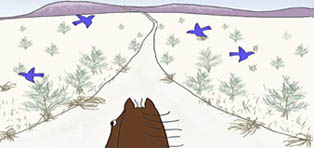 ELCR.org - Full Article
ELCR.org - Full ArticleJune 6, 2013, by ELCR
by Deb Balliet, CEO
“Land Use Planning”
We see it everywhere we go. On a road you drive every day for work, it may happen so gradually that it’s not even noticed at first. Other times its appearance can be shocking, perhaps noticed when visiting an area you haven’t seen for some time. A cluster of houses suddenly sprouts from land where you remember horses grazing, or a cross-country course where you once competed has been bulldozed to make way for a shopping plaza.
There was a time when equestrians did not need to be concerned about development, but as the U.S. population has grown and cities and towns expand, most regions of the country are experiencing “sprawl”. In many communities, the rate of sprawl even exceeds the rate of population growth. This expansion consumes staggering amounts of acreage, which directly threatens the land equestrians need for growing hay, raising and training horses, competition sites, boarding stables, youth riding camps and academies, trails, and recreational riding spaces. Protecting these spaces for equine use requires horse lovers to be not only aware of the issues, but knowledgeable about how expansion and development works, as well as actively involved in the decision-making processes about how land will be used in the future.
What exactly is “Land Use Planning”?
Land use planning is an important activity that assists a community grow and function in the manner that is needed and desired by its residents. As the population in a community changes, there is a need to plan for future land uses. For instance, your hometown’s population may have doubled in the last ten years. These residents need places to live and shop, and traffic snarls on narrow roads have become commonplace. Public health, safety, and education are also key planning issues. Through land use planning, your town’s leaders will try to address current needs (such as through construction of a new bypass, fire station, or water treatment plant) while also looking to the future to plan the direction the community is going (e.g. will the population continue to grow? Where could new houses and businesses be built? Will a larger school be needed? What land should be preserved as open space? etc. etc.). The outcome of these plans is typically articulated through a series of planning guidelines and zoning regulations...
Read more here:
https://elcr.org/three-words-every-equestrian-should-know/

No comments:
Post a Comment